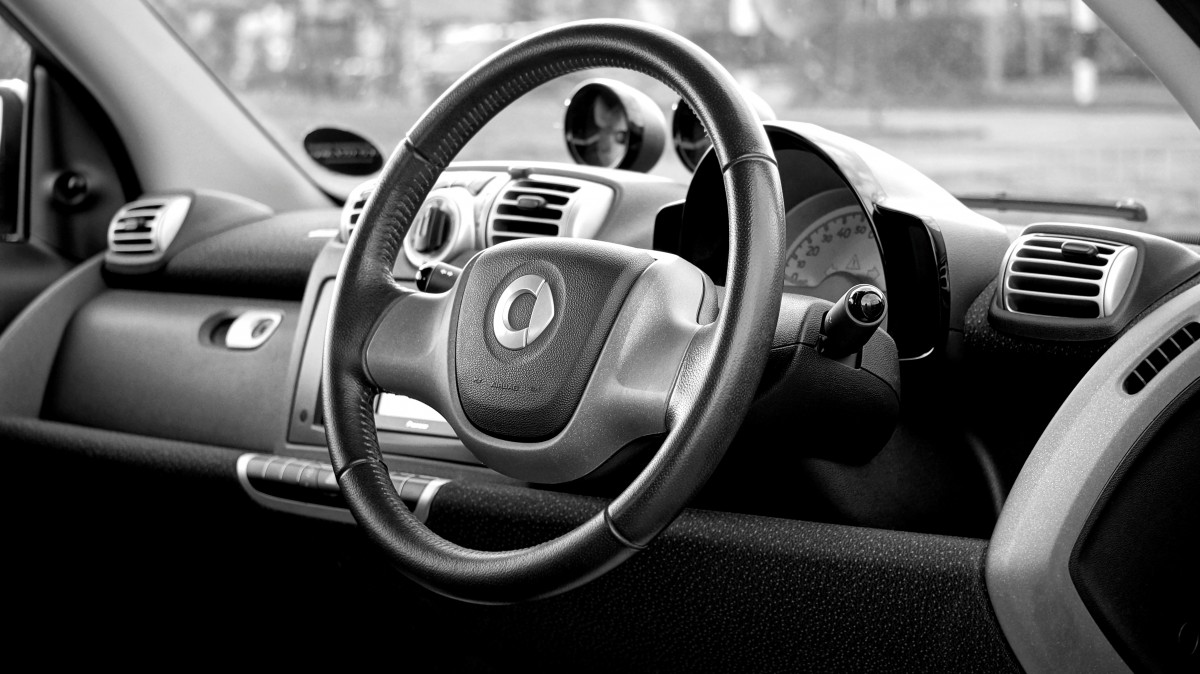Introduction: Decoding Your Vehicle’s Urgent Messages
For the average motorist, the illumination of a cryptic symbol on the dashboard often triggers a sudden, unwelcome mix of anxiety and confusion. These small, brightly lit icons are not mere decorative elements; they represent the vehicle’s highly sophisticated onboard computer system attempting to communicate critical, often urgent, information about its health and operational status.
This profound migration to digital systems means that understanding these symbols is not optional; it is a fundamental requirement of modern vehicle ownership and safety. While a benign door-ajar light can be easily dismissed, an illuminated red icon signals an impending or active system failure that, if ignored, can rapidly escalate into catastrophic mechanical damage, severe safety compromises, or costly roadside breakdowns.
The common mistake is to treat all warning lights equally or, worse, to assume the problem will resolve itself. The reality is that the color of the warning light—red, yellow/amber, or green/blue—is an international standard indicating the severity and immediacy of the threat. Red demands immediate attention and cessation of driving; yellow requires caution and prompt diagnosis.
Successfully interpreting these visual cues empowers the driver to make informed, timely decisions. This potentially saves thousands of dollars in major repair costs that result from driving a vehicle with low oil pressure or an overheating engine.
This comprehensive guide is designed to serve as your definitive resource for decoding the most critical and frequently encountered dashboard warning lights. We will meticulously categorize these symbols by their severity, detail the specific system failure each icon represents, and provide clear, actionable advice on the appropriate response. We will differentiate between issues requiring immediate towing and those that allow for safe, prompt driving to a mechanic. By mastering the language of your dashboard, you secure the longevity of your vehicle, maximize its resale value, and drive with unparalleled confidence and awareness.
Part I: Red Lights (Immediate Danger — Stop Driving)

Red warning lights indicate a critical problem that poses an immediate safety risk or is actively causing severe damage to the engine or transmission. If a red light illuminates, you should pull over safely and shut off the engine immediately.
A. The Engine and Cooling System Warnings
These lights signal failures related to the vehicle’s core operating temperature and lubrication.
- Oil Pressure Warning (The Oil Can): This is one of the most critical red lights. It does not mean the oil is low; it means the oil pressure required to circulate lubricant through the engine has dropped below a safe threshold. Driving with low oil pressure causes metal-on-metal contact, leading to catastrophic engine failure (seizure) within minutes.
- Engine Temperature Warning (The Thermometer): This indicates the engine is actively overheating, typically due to low coolant, a faulty thermostat, or a failing water pump. Continuing to drive will warp the engine’s head gasket or crack the engine block, requiring a complete engine replacement.
- Battery/Charging System Warning (The Battery Icon): This signals that the vehicle’s charging system—the alternator—is not generating electricity or the battery is not storing it. The car is running solely on battery power and will soon die, often stranding the driver.
B. The Brake System Warnings
These lights indicate a severe compromise to the vehicle’s ability to stop safely.
- Brake System Warning (The Circle with ! inside): This light, when red, typically indicates critically low brake fluid level or a serious hydraulic pressure failure. Low fluid is an immediate sign of a leak, meaning the braking system may be severely compromised.
- Parking Brake Warning (The Circle with a P): This is often the same indicator as the brake system warning (A), but sometimes it is used solely to indicate that the parking brake is currently engaged. Check immediately that the parking brake is not on before attempting to move.
- Airbag/SRS System Warning (A Person with a Circle): This means there is a fault in the Supplemental Restraint System (SRS). In the event of a collision, the airbags or seatbelt tensioners may not deploy, posing an immediate, severe safety risk.
Part II: Yellow/Amber Lights (Caution — Service Soon)

Yellow or amber lights signal a significant, non-catastrophic issue that requires prompt attention. Driving is usually safe for a short period, but diagnosis should be a priority.
A. The Engine Management Warning
This is the most common light, and it requires careful interpretation.
- Check Engine Light (CEL) (The Engine Outline): The CEL indicates a fault detected by the Onboard Diagnostics (OBD-II) computer related to the engine, emissions, or transmission. The severity ranges from a loose gas cap (minor) to a catalytic converter failure (major).
- CEL Response: Do not ignore the CEL. The car is likely running in a reduced performance mode to prevent damage. Have the fault codes read by a professional mechanic or an auto parts store as soon as possible.
- Flashing CEL: A flashing CEL is an exception; it indicates a severe engine misfire that is actively causing immediate, high-cost damage to the catalytic converter. This requires pulling over and stopping driving immediately, treating it like a red light.
B. Safety and Control System Warnings
These lights indicate issues with the electronic systems that assist the driver in maintaining control.
- Tire Pressure Monitoring System (TPMS) (The Flat Tire): This means one or more tires are significantly underinflated (usually $25\%$ below the recommended pressure). This affects handling, fuel economy, and tire life, and increases the risk of a blowout.
- Anti-lock Brake System (ABS) Warning (ABS inside a Circle): This means there is a fault in the ABS computer or sensors. The regular brakes will still function, but the anti-lock feature (which prevents skidding during hard braking) is disabled. Drive with extreme caution.
- Electronic Stability Control (ESC) or Traction Control: This light, usually the silhouette of a car skidding, indicates a system fault. The electronic aids that prevent skidding and loss of control are disabled. Drive slowly and avoid aggressive maneuvers, especially in poor weather.
C. Maintenance and Fluid Level Warnings
These lights warn of necessary maintenance or fluid consumption that has passed a safe threshold.
- Low Fuel Light (The Gas Pump): This indicates fuel reserves are low. While not an engine failure, running out of fuel can damage the fuel pump and cause inconvenient breakdowns.
- Low Washer Fluid: Indicates the washer fluid reservoir is near empty. This should be treated as a safety concern, as visibility can quickly become compromised.
- Service Required Soon/Maintenance Reminder: This is a generic light or message often triggered by mileage, signaling that a scheduled service (e.g., oil change, routine inspection) is due.
Part III: Green and Blue Lights (Information and Status)
These lights generally provide information about a system that is currently active, fully operational, or performing as expected. They are usually not cause for concern.
A. Headlight and Visibility Indicators
- High Beam Indicator (Blue Icon): A blue light, usually shaped like a headlight, indicates that your high-beam headlights are currently activated. Dim the lights immediately when approaching or following other vehicles.
- Headlight/Parking Light Indicator (Green Icon): A green icon shaped like a headlight or side lights confirms that your headlights, fog lights, or running lights are currently switched on.
- Turn Signal Indicators (Green Arrows): Flashing green arrows indicate the direction of your activated turn signal.
B. Driver Assist and Efficiency Indicators
- Cruise Control (Green/White Icon): Indicates that the cruise control system is active (white) or currently set and regulating speed (green).
- ECO Mode: A green or blue indicator (often labeled “ECO”) confirms that the car is running in an economy mode, prioritizing fuel efficiency over performance.
- Ready/EV Mode (Hybrid/Electric Vehicles): For hybrid or electric vehicles, a green “Ready” light indicates that the car’s electric motor system is on and ready to drive, even if the engine is silent.
Part IV: Immediate Response Action Plan
Knowing the meaning of the light is useless without a clear plan of action to prevent damage and ensure safety.
A. Immediate Red Light Response Protocol
When a red light illuminates, speed and safety are paramount.
- Pull Over Safely: Immediately find the nearest safe location (shoulder of the road, rest stop, empty parking lot) and engage the hazard lights. Do not wait for the next exit or destination.
- Shut Off Engine: Turn off the engine immediately, especially for the Oil Pressure and Temperature warnings. Continuing to run the engine for even 30 seconds can cause thousands of dollars in irreparable damage.
- Check Fluid Levels (Cooling/Oil): After the engine has cooled for at least 30 minutes, check the engine oil and coolant levels. Do not attempt to fix or drive the vehicle if the level is critically low. Call for a tow truck.
B. Amber Light Diagnostic Protocol
Amber lights allow for safe, prompt action without immediate cessation of driving.
- Fault Code Reading: If the CEL illuminates, drive safely to the nearest auto parts store (many offer free OBD-II code readings) or mechanic. The code provides the specific diagnosis needed for repair.
- Tire Pressure Correction: For the TPMS light, check the pressure of all four tires using a gauge and inflate them to the PSI specified on the sticker inside the driver’s side doorjamb. The light should turn off within a few minutes of driving.
- Address the Cause: Do not simply reset the light or ignore it. Amber lights indicate a problem that will affect performance, safety, or fuel economy if left unaddressed.
C. Proactive Monitoring
- Owner’s Manual Reference: Every driver should keep a copy of their owner’s manual (or the digital version) accessible to confirm the exact meaning and recommended response for any unfamiliar icon.
- Routine Maintenance: Ensure all routine maintenance is performed on schedule. Regular service catches small fluid leaks, worn belts, and low battery voltages before they trigger critical warning lights.
Conclusion: The Necessity of Vigilance
Mastering the language of the dashboard warning lights is the most essential, proactive maintenance skill a driver can possess. This transforms the driver from a passive operator to an informed guardian of their vehicle’s health.
The traffic light coding system—where red demands immediate shutdown to prevent catastrophic engine failure and amber necessitates prompt service—provides a clear, actionable hierarchy of risk. Ignoring a red light, especially the Oil Pressure or Engine Temperature warnings, guarantees irreversible, high-cost mechanical destruction.
By committing to immediate, informed action—knowing when to safely pull over and when to proceed directly to a mechanic—drivers ensure the longevity and reliability of their asset. This simple vigilance not only preserves the vehicle’s highest possible resale value but, more importantly, safeguards the driver and passengers from unpredictable failures on the road.













